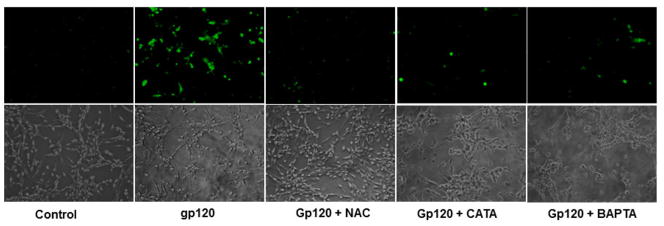Fig.1.
Astrocytes were treated with gp120 alone or gp120 plus either NAC, catalase or BAPTA-AM. Following the treatments, intracellular ROS was monitored by using a 2′–7′ dichlorofluorescence diacetate (H2DCFDA) (Sigma, St. Louis, MO), which forms a fluorescent compound, dichlorofluorescein, upon oxidation with ROS. Fluorescent images were captured under inverted fluorescence microscope (Olympus) set at excitation and emission wave lengths of 485 and 535 nm respectively. The cells treated with gp120 show higher fluorescence suggesting increased ROS production. Cells pretreated with antioxidants or BAPTA-AM showed significantly lesser ROS production as evidenced by reduced fluorescence.

